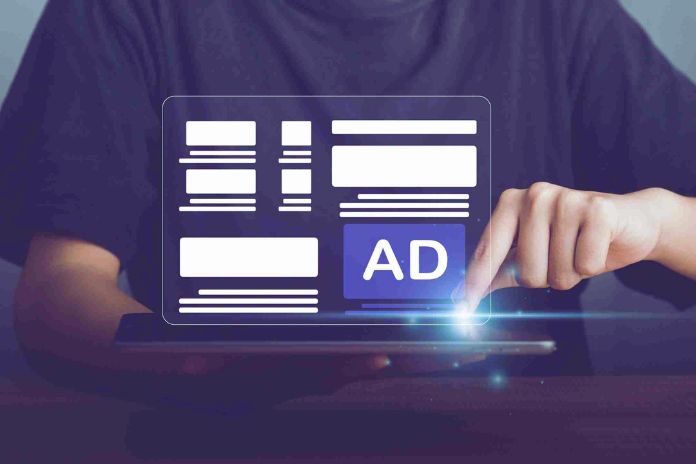Table of Contents
Introduction
As the digital advertising landscape evolves, programmatic advertising continues to dominate marketing strategies worldwide. By 2025, significant shifts are expected to enhance how brands connect with consumers. This article delves into the key trends that will shape programmatic advertising in the near future, emphasizing the role of artificial intelligence, consumer data protection, and the evolution of advertising channels.
The Rise of AI and Machine Learning in Programmatic Advertising
AI and machine learning (ML) are revolutionizing programmatic advertising. These technologies allow advertisers to analyze large amounts of data in real-time, improving campaign efficiency and targeting. By 2025, AI and ML will play a major role in making ads smarter and more personalized.
How AI and ML Are Used in Programmatic Advertising:
- Predictive Analytics: Using past data, AI can predict consumer behavior, helping advertisers adjust campaigns ahead of time. For example, tools likeGoogle Marketing Platform use these insights to optimize budgets.
- Dynamic Creative Optimization (DCO): AI adapts ad creatives based on user interaction, creating more engaging content. Companies like Algorithms use this to deliver personalized ads in real-time.
- Automated Bidding: AI adjusts ad bids to stay competitive and maximize returns on ad spend. Platforms like Amazon Advertising already use automated bidding to improve campaign results.
What’s Next:
As AI and ML evolve, expect more personalized and engaging marketing. These technologies will help advertisers deliver ads that are highly relevant, improving user experience and boosting satisfaction. Additionally, AI will help detect fraudulent activity, ensuring that advertising budgets are spent efficiently.
Increased Focus on Privacy and Data Protection in Programmatic Advertising
As we approach 2025, privacy laws like GDPR and CCPA are changing how programmatic advertising works. These regulations emphasize the importance of protecting consumer data, forcing brands to adopt more ethical practices when handling data.
Key Changes to Watch:
- First-Party Data: Companies will rely more on first-party data (information gathered directly from customers) to stay compliant and trustworthy. For example, Adobe Analytics helps brands use this data responsibly.
- Transparency: Consumers are more aware of how their data is used. As a result, advertisers will focus on providing clearer information about how and where ads are placed. Companies like The Trade Desk are already leading efforts to improve transparency.
- Privacy-Focused Advertising: With third-party cookies disappearing, advertisers will shift to strategies like contextual advertising and cohort-based targeting. For instance, Google’s FLoC project offers a way to personalize ads without invading privacy.
What’s Next:
Expect to see new techniques that anonymize data, helping marketers gain insights without compromising privacy. Collaboration between brands, using first-party data while following privacy rules, will become crucial to create effective and compliant campaigns.
Read Also: The Rise of Programmatic Advertising: What Businesses Should Know
The Evolution of Programmatic Advertising Channels
By 2025, programmatic advertising channels are expected to grow, focusing on newer platforms like Video on Demand (VOD), Connected TV (CTV), and audio streaming, as consumer habits shift toward these media.
Emerging Channels:
- Connected TV (CTV): As more people switch from traditional TV to streaming services, CTV is becoming a key channel for targeted ads. Brands can tailor ads to viewers based on what they watch. Hulu is one example of a platform leading this trend.
- Digital Out-Of-Home (DOOH): Programmatic advertising is expanding into physical spaces like shopping malls, airports, and stadiums. With real-time data, ads can be shown to the right audience in the right place. Companies like VIOOH are driving this change.
- Audio Streaming: With podcasts and music streaming growing, platforms like Spotify are becoming important for targeted audio ads. Advertisers can reach users based on their music preferences and listening habits.
What’s Next:
As programmatic channels continue to evolve, advertisers will need to integrate their campaigns across multiple platforms for consistent messaging and better engagement. Expect to see more hybrid solutions where ads seamlessly flow between various channels.
Conclusion
As we move toward 2025, the programmatic advertising landscape will experience dynamic changes driven by advancements in AI, intensified privacy prerequisites, and the emergence of new channels. By embracing these trends, advertisers will be better positioned to engage consumers meaningfully while navigating the intricacies of a constantly evolving digital environment. Staying ahead of these trends is essential for anyone looking to thrive in the future of programmatic advertising.
Top 5 FAQs about Programmatic Advertising Trends to Watch in 2025
1. What is programmatic advertising?
Programmatic advertising refers to the automated buying and selling of digital ad inventory, allowing for precision targeting and real-time data analysis. This approach leverages technology to streamline and optimize ad purchasing processes, making it more efficient than traditional methods.
2. How is AI transforming programmatic advertising?
AI transforms programmatic advertising by analyzing vast datasets to optimize campaigns, enhance targeting, and improve user engagement. Applications like predictive analytics and automated bidding strategies enable advertisers to make data-driven decisions that increase their return on investment.
3. What privacy regulations should advertisers be aware of by 2025?
Advertisers should be aware of GDPR and CCPA and their implications on data collection and consumer privacy. As regulations evolve, brands must prioritize ethical data practices, focusing on first-party data and using techniques for privacy-centric targeting to comply with legal obligations and build consumer trust.
4. How will programmatic channels evolve by 2025?
By 2025, programmatic channels will likely expand to include more sophisticated platforms like Connected TV and Digital Out-Of-Home advertising. This diversification will allow brands to reach consumers across various touchpoints, enhancing their ability to deliver relevant and engaging messaging.
5. Why is first-party data becoming more important in programmatic advertising?
First-party data is becoming more important because it is collected directly from interactions, making it reliable and compliant with privacy regulations. Marketers are encouraged to focus on first-party data to build trust with consumers and ensure transparency within their advertising practices.






